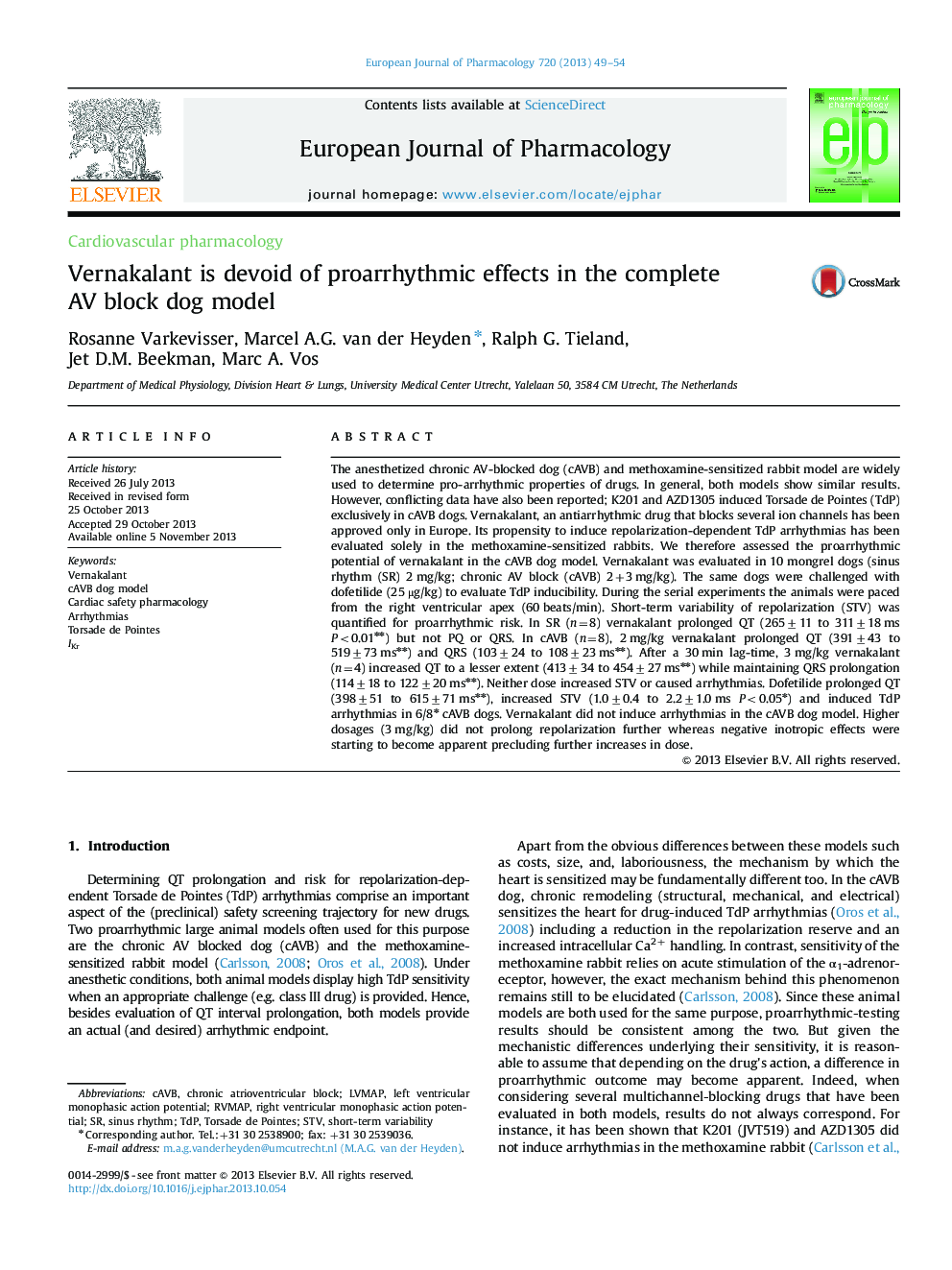| Article ID | Journal | Published Year | Pages | File Type |
|---|---|---|---|---|
| 2531914 | European Journal of Pharmacology | 2013 | 6 Pages |
The anesthetized chronic AV-blocked dog (cAVB) and methoxamine-sensitized rabbit model are widely used to determine pro-arrhythmic properties of drugs. In general, both models show similar results. However, conflicting data have also been reported; K201 and AZD1305 induced Torsade de Pointes (TdP) exclusively in cAVB dogs. Vernakalant, an antiarrhythmic drug that blocks several ion channels has been approved only in Europe. Its propensity to induce repolarization-dependent TdP arrhythmias has been evaluated solely in the methoxamine-sensitized rabbits. We therefore assessed the proarrhythmic potential of vernakalant in the cAVB dog model. Vernakalant was evaluated in 10 mongrel dogs (sinus rhythm (SR) 2 mg/kg; chronic AV block (cAVB) 2+3 mg/kg). The same dogs were challenged with dofetilide (25 μg/kg) to evaluate TdP inducibility. During the serial experiments the animals were paced from the right ventricular apex (60 beats/min). Short-term variability of repolarization (STV) was quantified for proarrhythmic risk. In SR (n=8) vernakalant prolonged QT (265±11 to 311±18 ms P<0.01⁎⁎) but not PQ or QRS. In cAVB (n=8), 2 mg/kg vernakalant prolonged QT (391±43 to 519±73 ms⁎⁎) and QRS (103±24 to 108±23 ms⁎⁎). After a 30 min lag-time, 3 mg/kg vernakalant (n=4) increased QT to a lesser extent (413±34 to 454±27 ms⁎⁎) while maintaining QRS prolongation (114±18 to 122±20 ms⁎⁎). Neither dose increased STV or caused arrhythmias. Dofetilide prolonged QT (398±51 to 615±71 ms⁎⁎), increased STV (1.0±0.4 to 2.2±1.0 ms P<0.05⁎) and induced TdP arrhythmias in 6/8⁎ cAVB dogs. Vernakalant did not induce arrhythmias in the cAVB dog model. Higher dosages (3 mg/kg) did not prolong repolarization further whereas negative inotropic effects were starting to become apparent precluding further increases in dose.
